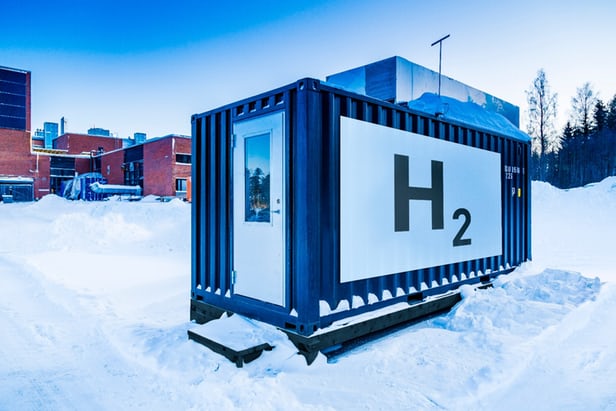Reactor that produces liquid fuel from CO2 in the air to be tested in portable pilot plant

The chemical reactor at the heart of the Ineratec system designed to convert CO2 from the air into liquid fuels(Credit: KIT / Ineratec)
The fuels we burn add carbon dioxide to the atmosphere, which contributes to climate change. A new compact power plant is starting up in Finland that could help combat the problem by converting atmospheric carbon dioxide itself into usable fuels. The transportable chemical reactor uses solar power to convert CO2 from the air and regenerative hydrogen from electrolysis into liquid fuels.
We've seen similar efforts to convert ambient CO2 into methanol, ethanol, and even carbon nanofibers, but few are aiming to bring a product to market like Ineratec aims to do soon.
Dubbed the Soletair Project, the inner workings of the reactor are structured on a microscopic level to make it compact enough to fit into a shipping container. The system, which was created at Germany's Karlsruhe Institute of Technology (KIT), will be commercialized by KIT spinoff company Ineratec and its developers claim it can produce gasoline, diesel and kerosene on demand.
The reactor can also be configured to convert modest amounts of exhaust containing methane, produced by both fossil and renewable fuels or waste gas resulting from oil or biogas production, into the same varieties of liquid synthetic fuels.

"We supply an entirely new, modular technology that is a real alternative to the costly large chemical facilities used for the conventional gas-to-liquid process," Dr. Ing. Tim Böltken of Ineratec explains. He says the system could eventually be used to harvest fuel from sewage treatment plants or let organic farmers also produce energy on the side.
A pilot plant is set to go into operation at the VTT Technical Research Center of Finland, which developed the system's direct air capture unit, by the end of the year. In 2017, testing will continue at Lappeenranta University of Technology (LUT), which is responsible for developing the electrolysis system used to generate the hydrogen needed for the reaction. The system could be ready to go to market by mid-2018.
